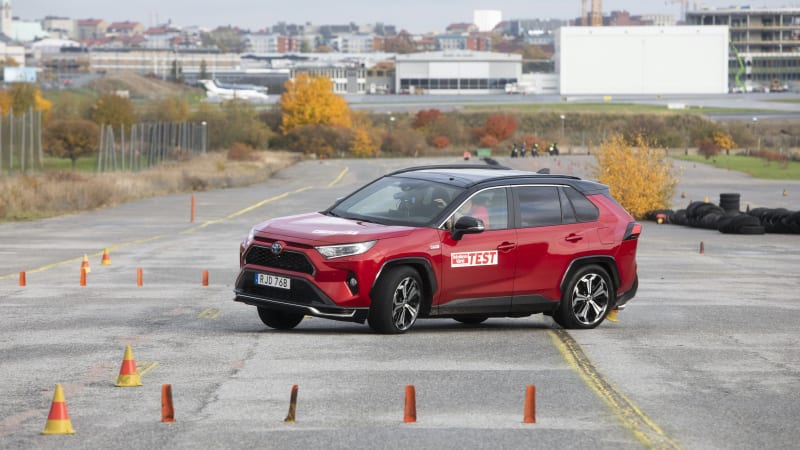Of all the existing automotive tests, the most famous one is the so-called “moose test”. This is partly due to its unusual name and partly to the fact that, at one time it revealed considerable deficiencies in some iconic cars handling. The car experts from the Indy Auto Man dealership admit that such tests do not play a primary role when choosing a car because the list of criteria contains several more vital factors. However, the car’s behavior in an unexpected situation remains important. Moreover, in some regions, animals running onto the road, such as white-tailed deer in Indiana, are not such a rarity.
History and standards
Invented by the Swedish magazine Teknikens Värld in the 1970s, the test was supposed to demonstrate the car’s ability to avoid unexpectedly appearing objects at speed. The mention of moose appeared only years later. The International Organization for Standardization (ISO) eventually adopted this challenge, and today, it involves a dry track with cones set up in an S shape, over which cars are driven at “maximum weight and increasingly higher speeds.” The model passes the test if it can perform the maneuver at a speed of at least 72 km/h (45mph) without hitting the cones or flipping over. Of course, there are many other special rules to ensure a level playing field for participants (the ISO test number is 3888-2:2011 if you want all the details).
Advantages
The significance of the moose test goes beyond the need to avoid collisions with large animals. The reality is that while driving, all sorts of obstacles can suddenly appear in your path – from pets to cars leaving the parking lot, children playing, etc. A sharp turn in one direction, then in the opposite, is a common story. The test has repeatedly forced automakers to make significant changes to the design of their models. And the quintessence of these efforts are cars considered the safest in 2024. One of the most famous examples was the 1997 Mercedes A-Class, which test led to a large-scale scandal in the media. When the A-Class first appeared, automotive journalists praised it for its comfort, but few thought of testing the limits of the first Mercedes-Benz FWD car. About a month later, the moose tests began, and two A-Classes almost immediately overturned, and several others broke down. The published results ultimately forced the company to suspend sales. The A-Class returned to the market only after Mercedes improved the suspension, including stability control as a standard feature. A similar incident happened in 2016 with a Toyota Hilux that nearly flipped over. The manufacturer replaced the stability control system and factory-installed tires, providing new recommendations on pressure. Of course, Hilux owners came to the defense of their favorite pickup, but several trucks of the same (or even larger) size successfully passed the same test at higher speeds.
Disadvantages
Although the moose test itself has prescribed standards, the driver skills differ greatly, which significantly skews the results. After the PR failure of the Mercedes A-Class, the company resorted to the help of many journalists and experienced and average drivers to conduct tests again and ensure that the suspension improvements corrected the identified shortcomings. Their results were published in a study by Jörg Breuer of Daimler-Benz AG in 1998. After thousands of test runs, the problem was deemed to be resolved, but the company found discrepancies that cast doubt on the viability of the moose test in real life. For example, experienced pilots could complete the course at significantly higher speeds and with lower steering angles compared to journalists and regular drivers. The discrepancies in the results indicated that this maneuver cannot be classified as a reliable and objective safety test. In addition, the tests revealed that braking, combined with simultaneous steering, was the most common response of real drivers, and the ISO standard requires the car to avoid obstacles at a constant speed. That is, you have to keep your foot on the pedal even when your instinct is to brake. Of course, this is just one study, but it explains well why not everyone uses the moose test.
From losers to winners
If we talk about the latest tests, their real star was the all-wheel drive Tesla Model Y (2021), which was able to complete the track at an astonishing speed of 83 km/h (52 mph). The stability control system perfectly corrected the skid of the rear wheels, proving that it was quite capable of handling a two-ton car. Among the losers could be the already mentioned Toyota Hilux pickup truck (2016), but its failure, on the contrary, showed the advantages of independent testing. When Teknikens Varld began testing the Hilux, they did not have high expectations because its predecessor, a few years earlier did not show the best results. However, it ended up on two wheels at 60 km/h (37mph), which was surprisingly bad. But Toyota is Toyota. The company did not put up with the disastrous result and conducted an internal investigation, radically changing the suspension and its settings. The modified pickup truck returned to Teknikens Varld and passed all tests brilliantly. Today, the Hilux is one of the best-selling cars in many countries, including the US. For example, in 2022, Toyota sold more than half a million cars, targeting not only the commercial sector but also ordinary owners who use the Hilux as everyday transport. Can you imagine what would have happened if its shortcomings had not been discovered almost immediately after the start of sales?

